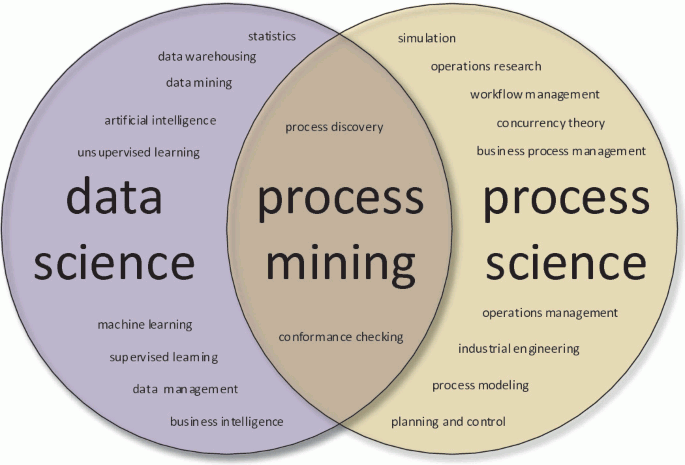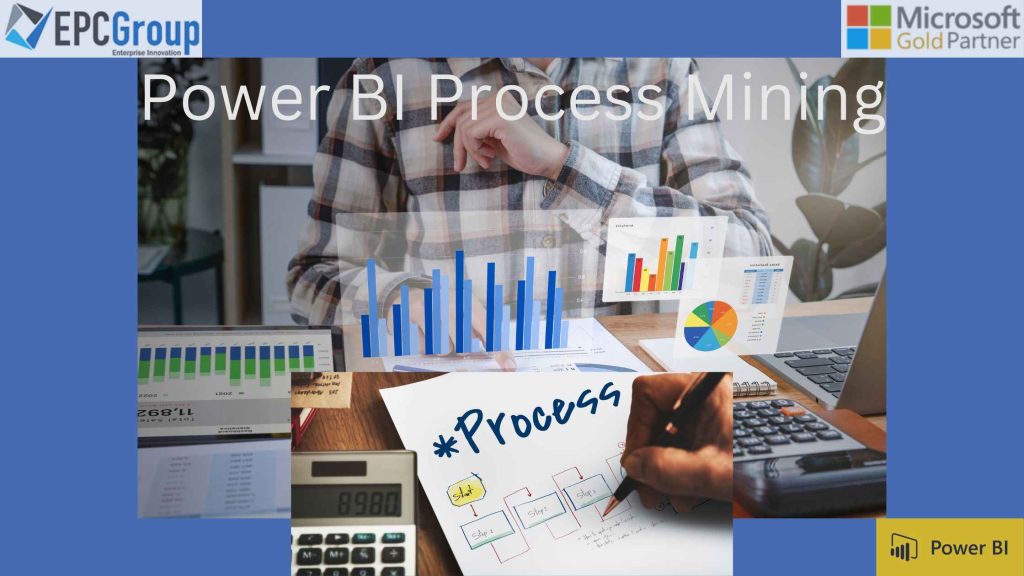Process mining is the missing link between data science and process science. Power BI Process Mining provides a new means to improve the Process Analytics Factory in various application domains. The two main drivers for this new technology are more and more events being recorded, which provide detailed information about the history of processes, and a need for better business intelligence tools that can provide clear-cut business process insights.
Process mining is a new field that offers complete toolkits to enable process changes and deliver fact-based insights. Data mining and process model-driven techniques are the foundations of this emerging science. But Power BI – Power BI Process Mining is much more than synthesizing earlier strategies. For instance, current data mining methods are too data-centric to provide a thorough insight into an organization’s end-to-end operations. As a result, power BI systems emphasize straightforward dashboards and paginated reports more than precise business process insights.
How Power BI Process Mining Gives More Development In Business
Power BI Process Mining information from event logs complements existing approaches to Business Process Management (BPM). The field of business process management (BPM) uses management science and information technology understanding to operational business operations. It has recently received considerable attention due to its potential for significantly increasing productivity and saving costs.
Workflow Management may be considered as an expansion of BPM (WFM). While BPM has a broader focus, from process automation and capabilities to process management and work organization, WFM primarily concentrates on business-process automation. On the one hand, without relying on brand-new technology, BPM seeks to enhance operational business Process Analytics Factory.
Power BI Process Mining is a powerful tool for identifying the essential tasks in a process flow and developing workflow models that provide capabilities into the cycle time or throughput of different activities within a workflow. It helps to understand how tasks are affected by other tasks; it also helps in understanding why certain things take longer than others; it can also help in identifying bottlenecks in production flows when they occur; finally, it can be used as a form of ad-hoc analytics when there are no suitable data sources available within an organization’s infrastructure.

Reasons To Use Power Bi Process Mining Software
- It involves using software that can detect data patterns and then apply them to improve performance and efficiency.
- Power BI Process Mining is typically used to extract knowledge about fundamental processes. However, it can also be used to discover, monitor, or improve the performance of other types of systems, such as business intelligence applications or even legacy systems with insufficient data or option event log data.
- Managing a business involves four phases: design, implementation, enactment, and monitoring. The design phase is where we define our goals for the process.
- We’ll use this goal as a starting point for our process model. In the implementation phase, we create software to help us achieve our security. However, this phase may take much longer if we code it into conventional software.
- After the implementation phase has been completed successfully (or not), we monitor our processes and ensure they’re running smoothly by observing data from various sources and measuring their effectiveness in meeting our goals.
How to Perform Automatic Process Discovery With Power BI Process Mining
Power BI Process Mining is extracting knowledge from data, usually business data. It’s used to find patterns and relationships that are too complex or difficult to discover manually. You can also use it to find software bugs, known as “Bug Hunting.”
Process Mining breaks down small pieces of extensive data into smaller pieces that you can analyze separately. This process is called “Key Feature Extraction.” A favorite feature extractor uses statistical techniques to analyze a large dataset and find specific types of information within it.
Once you have extracted your favorite features from your data, you have to merge them into a single model representing everything that happened during those events. This process is called “Model Building.” Each time you run an algorithm on your datasets, it will produce new models for each event in your business processes.

When to Automate Process Mining With Conformance Checking
Automating conformance checking is a great field to improve your processes, but remember that it can be time-consuming and expensive. However, some tools let you quickly and easily check the conformance of an existing process model against the event log of the same process.
Here, you analyze an event log to see if it conforms to the rules set out by a process model. The analysis findings can then be used to create new rules that will help increase efficiency. For instance, if you find out that more than one million euros in purchase orders require two checks, you might devise a rule that specifies this requirement and another one stating that all orders should be between five and ten euros apart from each other.
Another example is the so-called “four-eyes” principle, which states that no person should be allowed to execute certain activities at any time. You can discover potential fraud cases by scanning an event log using rules specifying these requirements. Conformance checking may detect, locate, and explain deviations from these rules and measure their severity.

We Can Use Process Mining To Improve Software Development and Quality Assurance
Power BI Process Mining is a technique that uses an automated process model and data to improve software development and quality assurance. The first two types of process mining are conformance checking and alignment between model and paginated report. Enhancement is the third kind of process mining. Here, the goal is to enhance an existing process model by adding details from the actual process you captured in an event log.
In contrast to conformance verification, which gauges how closely the model and reality line up, this third Power BI – Power BI Process Mining paginated report focuses on modifying or expanding the initial release model. One type of enhancement is repair, modifying the model to reflect reality better. For example, if two activities are modeled sequentially but in reality can happen in any order, then you may correct the model to reflect this.
An extension is a different improvement that gives the process model a fresh viewpoint by cross-correlating it with the log. The addition of performance information to a process model is one example. For instance, one may illustrate bottlenecks, service row-level security, throughput times, and frequencies by extending the use of timestamps in the event log of the “request for compensation” procedure.
What Power BI Process Mining Can Do For Your Data Analytics Systems
Power BI Process Mining is an essential tool for modern organizations that need to manage non-trivial operational processes. You must ideally match procedures and reports to achieve compliance, wide range, and customer service criteria.
The digital and physical universe is amalgamating into one universe where events are recorded as they happen, and processes are guided and controlled based on event data:
- We presented the two main disciplines that process mining builds on: Business Process Management (BPM) and data mining.
- We introduced several process modeling techniques and discussed the role of process models in the context of BPM.
- We introduced some of the basic data mining techniques.
Power BI Process Mining allows you to gain insights into your operations by analyzing your business processes through a set of reports that help you identify bottlenecks, optimize performance, and reduce costs by measuring KPIs, along with reducing overheads associated with storing unnecessary data sets within your database range of industry.
Why EPC Group is your trusted Microsoft Power BI partner
With Power Bi process mining, more and more insights will be made available to process users. Next, to the end-to-end views, you can provide critical users. The information from these insights will also be available to other roles. For example, domain knowledge workers can get an automated view of their domain’s keys to success or risks. In other words: a new collective intelligence is established within and between organizations where they collaborate.
Processes are automated with the so-called process monitoring solutions which can provide real-time statistics on the processes being executed and aid in the interpretation of data. Our work with Power BI is another field to continue to provide our clients with the tools and strategies for successful business development. Contact us today to learn how EPC Group can help take your data intelligence to the next level with managed Power BI service.










